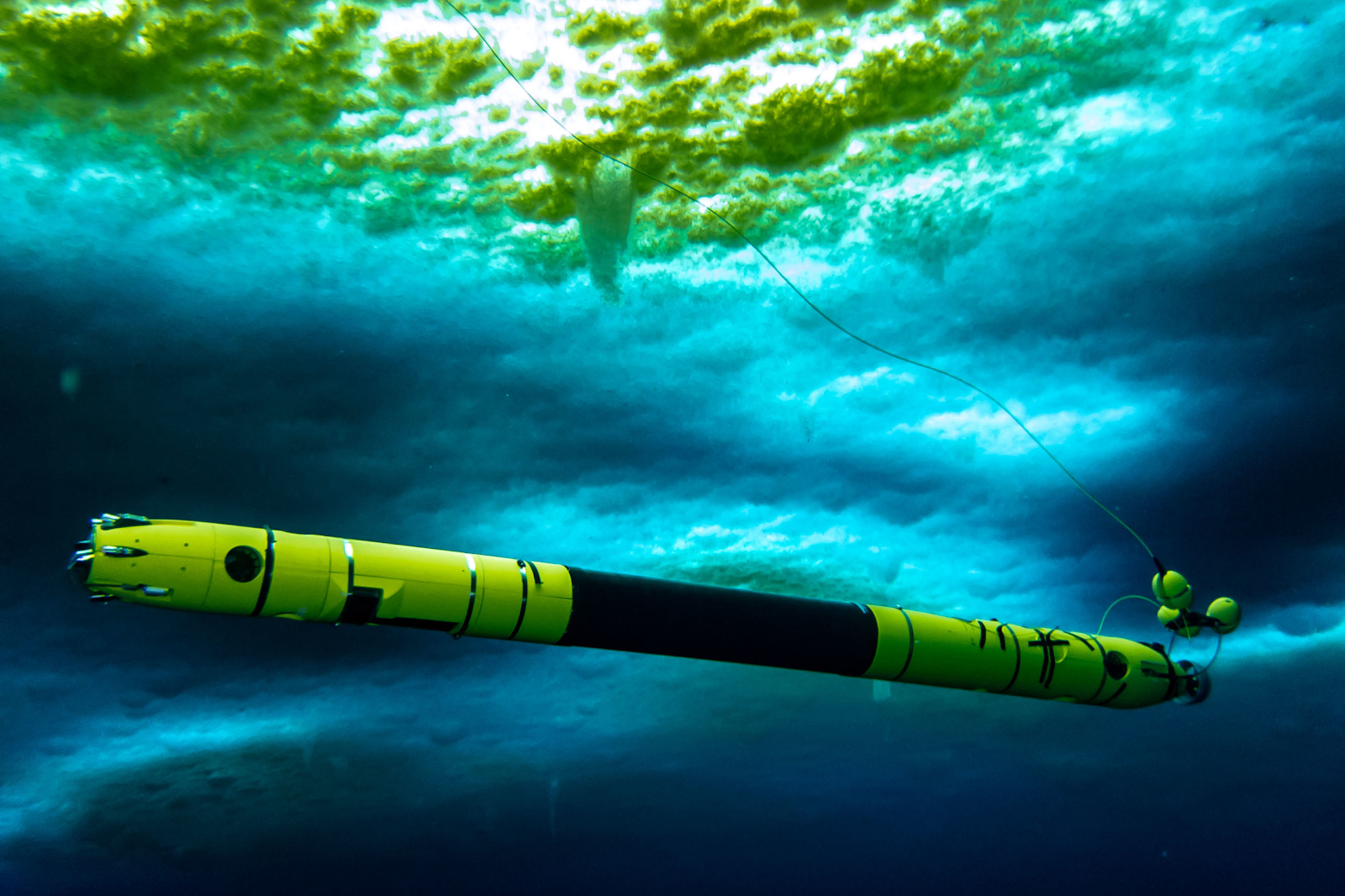On Thin Ice: Underwater Robots in Antarctica
By Andrew Millham
Location: Essex, UK
Andrew Millham is a nature writer, environmental science student and Media Officer for ReservaYLT.
You may have read the title and felt a sense of alarm at the thought of intelligent robots taking over our most remote, snowy continent. However, this article is about a friendly robot which is helping to uncover ecosystems based around Antarctic sea ice as it ventures underneath the ice where no one has been before.
The section of ice that is being studied is called Thwaites Glacier, which is the size of Britain stretching from land out to the sea. Twaites is also known as the ‘Doomsday Glacier’ because it is one of Antarctica’s fastest melting glaciers, causing increased sea level rise. Scientists predict that if the glacier melts fully, global sea level would rise by 0.9 m, causing low-lying countries like the Maldives to lose over 70% of their land area. The flow of this glacier has accelerated in recent years and its surface speed now exceeds 1.2 miles per year. To conduct further research into why Thwaites Glacier is so susceptible to melting and retreat, scientists have built a robot called ‘Icefin’ which can travel underwater to explore potential weaknesses in the ice and whether warmer water is causing accelerated rates of melting.
The entire project is part of the International Thwaites Glacier Collaboration, a multi-year project by the United States and the United Kingdom. Icefin was first developed at the College of Science at Georgia Tech, USA and, in 2016, Icefin was fully developed by the Planetary Habitability and Technology team. The 3.5 m long robot can reach depths of 1 km and is fitted with HD cameras, sonar systems, salinity and temperature probes, turbidity sensors.
The technology allowed Icefin to go under Thwaites Glacier in 2019 and 2020 to study the boundary where ice meets land. First, researchers had to drill a 700 m deep hole in the ice through stormy conditions and temperatures of -30 ˚C. They then lowered the torpedo-shaped robot into the bitter waters below.
The most important discovery is related to sea temperature. Where the ice meets the sea the water is over 2 ˚C above normal freezing temperature; these unusually warm temperatures will cause accelerated melting. David Holland, a lead researcher on the expedition stressed:
“Warm waters in this part of the world, as remote as they may seem, should serve as a warning to all of us about the potential dire changes to the planet brought about by climate change”.
Scientists have noted that if the glacier retreats much further, then it will cause an inevitable, irreversible collapse of the entire glacier over the next 200 to 1000 years. Oceanographers were already aware of small channels into the ice, allowing warmer sea water to attack further into the glacier, however, research found that these channels are much larger than originally thought. Dr Kelly Hogan from the British Antarctic Survey (BAS) said:
“These channels had not been mapped before in this kind of detail, and what we've discovered is that they're actually much bigger than anyone thought - up to 600m deep. Think of six football pitches back-to-back”
Large channels allow warm water to be in contact with more of the glacier, causing higher rates of melting. Just before this research began, NASA discovered an underwater cavity underneath the glacier with an area two-thirds the size of Manhattan. This means that the glacier is also melting from within and it currently contributes roughly 4% to global sea level rise; this may not sound a lot, but it is for a single glacier.
Melting of sea ice creates a positive feedback loop, meaning that melting results in even more melting. This is because of the ‘albedo effect’ which states that light surfaces reflect more solar radiation (heat) than dark surfaces. When the sun’s steamy rays hit the ice, most of it is reflected back into space. However, when ice has melted, sunlight hits the dark sea, which absorbs the heat energy, contributing to global warming. Global warming then causes more ice to melt – and the cycle continues. This process is also why you will feel hotter wearing a dark t-shirt on a sunny day – you are absorbing more solar energy. We are currently on the edge of one of these positive feedback loops, which – if we do nothing – will cause an irreversible cycle of warming and melting which we will no longer be able to prevent. Not only would this cause sea level rise, but also droughts, wildfires and the widespread displacement that follows disasters like these. For this reason, it is imperative that we reduce the emissions of greenhouse gases and keep global warming below the threshold of 1.5 ˚C.
It is not yet time to give up hope of a greener, or should I say icier future. Young people and youth organisations around the world are fully aware of the task at hand. Sir David Attenborough rightly called young people ``the great hope” because we have the power to rectify the mistakes made by previous generations and are doing so through organisations like Reserva: The Youth Land Trust and events like the annual Youth Ocean Conservation Summit. There is much to be hopeful for, and amazing technological developments like Icefin are evidence of humanity's capacity for innovation, which has been the cause of our problems, and hopefully the source of our salvation by using our ingenuity to create a better future for our oceans, and the planet overall. You can follow IceFin on Twitter (@IcefinRobot) to stay up to date with its current adventures underneath Twaites glacier.



